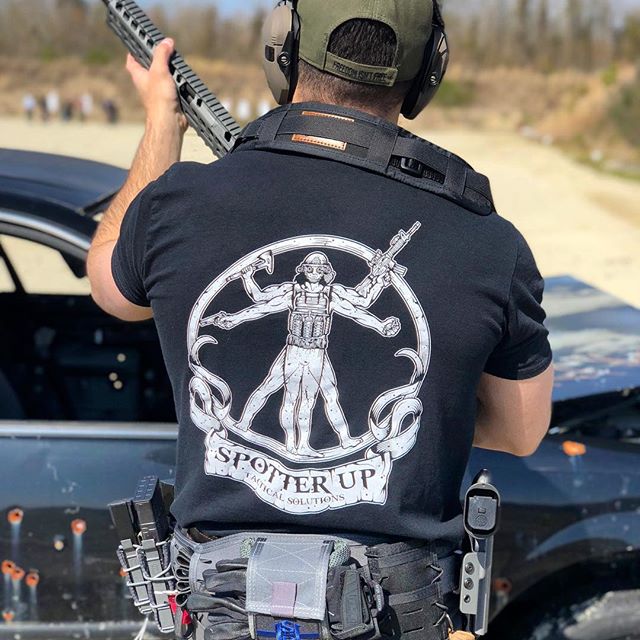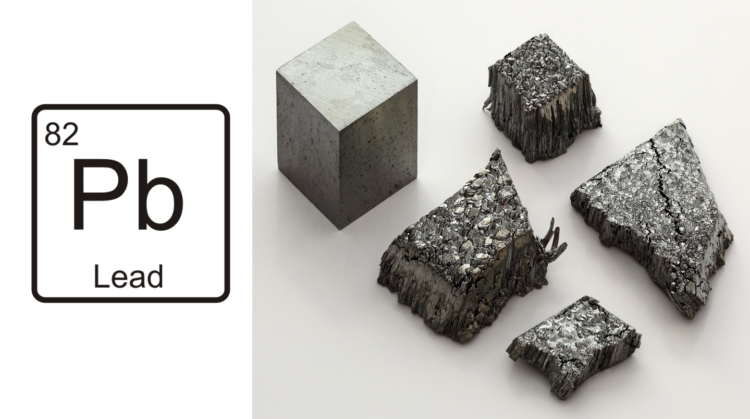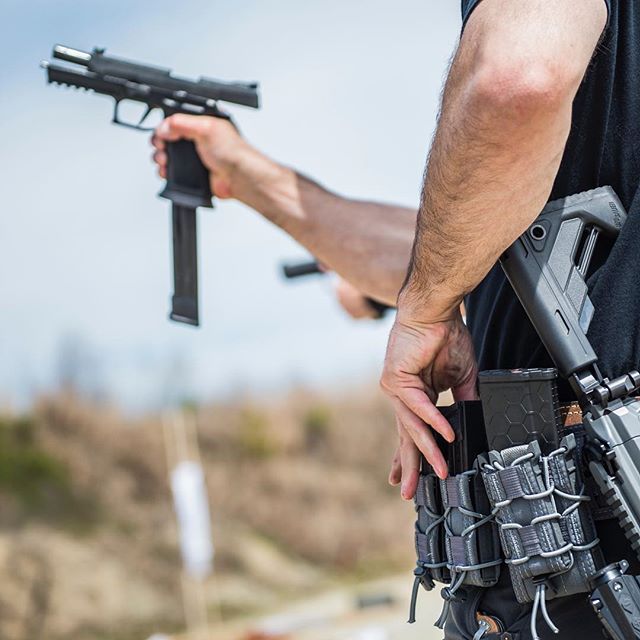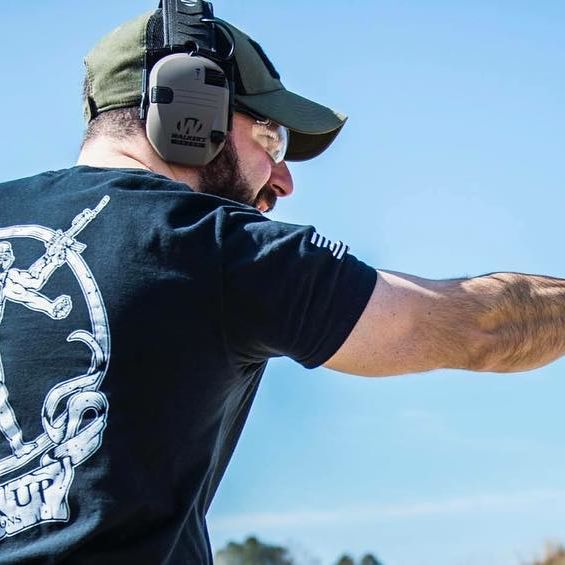Safe firearm handling is one of the fundamental tenants of being a responsible firearm owner. To reiterate here are the 4 fundamental rules for safe gun handling:
1) Always treat all firearms as if they are loaded.
2) Do not point the muzzle at anything you’re not willing to destroy.
3) Keep your finger off the trigger until you are ready to shoot.
4) Know your target and what’s behind it.
Most of us have ingrained these rules into our minds to be a responsible gun owner. However, there is another aspect of safe gun handling that is not discussed as much: the dangers of lead from firearms.
“Lead is a ubiquitous metal in the environment, and its adverse effects on human health are well documented. Lead interacts at multiple cellular sites and can alter protein function in part through binding to amino acid sulfhydryl and carboxyl groups on a wide variety of structural and functional proteins. In addition, lead mimics calcium and other divalent cations, and it induces the increased production of cytotoxic reactive oxygen species. Adverse effects associated with lead exposure can be observed in multiple body systems, including the nervous, cardiovascular, renal, hematologic, immunologic, and reproductive systems. Lead exposure is also known to induce adverse developmental effects in utero and in the developing neonate.” (1)
Much of the dangers from lead is contained in the ammunition. Full metal jacket projectiles, for example, have a solid lead core enclosed in a copper jacket. Gun powder and primers are also full of lead; although you can buy leadless primers, you can’t get leadless gunpowder. When the gun is fired, the primer ignites the gunpowder the propels the bullet out of the barrel. While this is happening the lead in the primer, gunpowder, and the bullet boils and sprays this toxic metal everywhere!
Shooting at outdoor ranges will minimize the effects of lead but not completely. For years, I have been shooting at an ‘advanced’ indoor range that is supposed to have state-of-the-art ventilation systems. I have been having some health issues such as, headaches, joint pains, tingling of the hands, loss of feeling in the fingers, digestive issues, irritability, concentration loss, and memory loss. I brushed it off and told myself these symptoms are due to my aging body, but I still wanted to get my lead level checked. When I got my lead levels back from the lab I realized this could very well be due to lead poisoning. The CDC has set the upper limit of blood levels for adults at 10 ug/dl and children at 5 ug/dl; my levels were reported at 26 ug/dl! In Virginia, if you have elevated lead levels it is reported to the Health Department. They will contact you to investigate the sources of lead and give you recommendations to minimize the risk.
In most situations, medical experts won’t recommend corrective therapy until lead levels reach 40 ug/dl, however, the CDC recommends that no level of lead is safe. In my case, 26 ug/dl, they recommended minimizing the exposure because there is no way to detox your body from lead. Here are the recommendations from the health department, via the CDC:
• Eat and/or drink in areas where lead-containing products are not being handled or processed.
• Use an effective lead removal product to clean your hands. Washing skin with standard soap and water is not enough to remove lead residues. 1 Full Disclosure & reg; (2) hand wipe technology lets you know instantly if they have lead on your hands. It was licensed in 2003 and is commercially available from SKC, Inc. Hygenall Decontamination Towels (3) are also available, which remove 98% of lead residues from skin. Mention of a company name does not imply commercial endorsement by NIOSH.
• Shower and change your clothes and shoes after working around lead-based products. This will keep lead dust from being tracked through your home, which will lower the chance of your family being exposed.
• Work in areas that are well-ventilated.
• Wear the proper personal protective equipment (PPE), such as goggles, gloves, boots, and protective clothing, to prevent contact while working around lead and lead dust. In some cases, a respirator may be necessary. Talk with a health and safety or union representative from your worksite or call 800-CDC-INFO (800-232-4636) to learn more.
• Talk with your doctor about workplace lead exposure if you are pregnant or planning to become pregnant. The Occupational Safety and Health Administration (OSHA) Lead Standard states that “the physician may recommend special protective measures or medical removal for an employee who is pregnant or who is planning to conceive a child when, in the physician’s judgment, continued exposure to lead at the current job would pose a significant risk.” For more information see Appendix C of the OSHA Lead Standard. (4)
• If you are a working mom who is being exposed to lead while still breastfeeding, consult your pediatrician to decide if you should have your blood lead level (BLL) tested.
• Talk with your employer to see if they do routine BLL testing; this is a simple blood test that can measure your blood lead levels. If not, you may talk with your doctor about having this test done. If levels are high, you can take steps to protect yourself and your family better.
[amazon_link asins=’0807000329,1557662320,1375626469,1332267580′ template=’ProductCarousel’ store=’spoup-20′ marketplace=’US’ link_id=’33c90f0f-44f9-11e8-b10b-a3cbff7baa63′]
• If you are concerned that you are being exposed to lead or another workplace hazard, contact our Health Hazard Evaluation Program and request to have your work environment assessed for free. For more details and to fill out a request, visit the NIOSH Health Hazard Evaluation (5) website.
• Contact the OSHA office nearest you (6) if you are concerned about unsafe working conditions.
• Check out the publications page (7) for more ways to lower job-related lead exposure, and to learn about industry-specific recommendations.
• Respirator Recommendations : (APF = 10) Any air-purifying respirator with an N100, R100, or P100 filter (including N100, R100, and P100 filtering facepieces) except quarter-mask respirators.
I had no idea that regular soap doesn’t get rid of the lead on your hands. I also never changed my clothes before entering the house so I could have been dragging in lead for years. The health department recommends a respirator mask to protects you from lead during shooting, but I don’t know if I’m brave enough to look like Bane, from Batman, at the range. Additionally, when shooting at competition matches we help reset the stage after every shoot. One thing I didn’t realize is that we should wait until the gun smoke clears because it contains a lot of the toxic chemicals. Shooting is the only source of lead for me and this is definitely an eye opener.
For now, my doctor recommends staying away from shooting or wearing protective gear, such as a respirator masks and long sleeves, while shooting. Also, I am required get my lead levels checked every month until my levels come down to 10 ug/dl. My hobby and passion has a dangerous health risk, besides getting shot, and I didn’t think it was a big deal until now. Lesson learned. For now, I will refrain from shooting indoors and follow the recommendations by the CDC. You may be putting your health and the health of your family at risk without even know it. Get your lead levels checked and follow the recommendations of the CDC, your doctor, and the health department. There are no safe levels for lead!
Reference
(1) https://www.nap.edu/catalog/18249/potential-health-risks-to-dod-firing-range-personnel-from-recurrent-lead-exposure
(2) http://www.skcinc.com/catalog/index.php?cPath=600000000_601000000_601000050
(3) http://www.industrycortex.com/products/profile/751610533/hygenall-decontamination-washcloths
(4) https://www.osha.gov/pls/oshaweb/owadisp.show_document?p_table=STANDARDS&p_id=10033
(5) https://www.cdc.gov/niosh/hhe/
(6) https://www.osha.gov/html/RAmap.html
(7) https://www.cdc.gov/niosh/topics/lead/publications.html
SPOTTER UP! Find a Way or Make One






